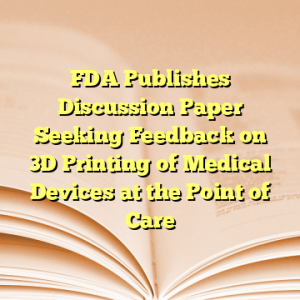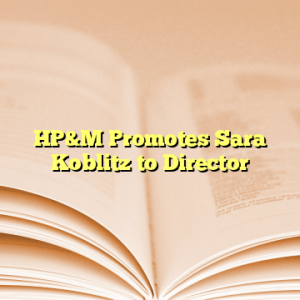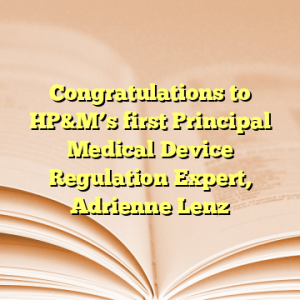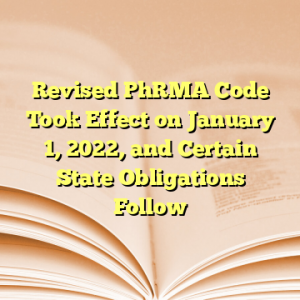By Michael S. Heesters & Jeffrey N. Wasserstein —
“EKRA” refers to the Eliminating Kickbacks in Recovery Act, which was part of the Substance Use – Disorder Prevention that Promotes Opioid Recovery and Treatment for Patients and Communities Act of 2018. EKRA is codified at 18 U.S.C. § 220 and was described on HP&M’s blog here. Until recently, no federal court had had occasion to interpret EKRA. That changed on October 18, 2021 when the Federal District Court for the District of Hawaii handed down a decision that construed key terms in the statute.
I. The Eliminating Kickbacks in Recovery Act (“EKRA”)
In general, EKRA prohibits, knowingly and willfully, soliciting, receiving, paying or offering kickbacks in exchange for referring to, inducing a referral to, or using the services of a recovery home, clinical treatment facility, or laboratory.
EKRA defines “recovery home” as “a shared living environment that is, or purports to be, free from alcohol and illicit drug use and centered on peer support and connection to services that promote sustained recovery from substance use disorders.” 18 U.S.C. § 220(e)(5). “Clinical treatment facility” is defined as “a medical setting, other than a hospital, that provides detoxification, risk reduction, outpatient treatment and care, residential treatment, or rehabilitation for substance use, pursuant to licensure or certification under State law.” 18 U.S.C. § 220(e)(2). “Laboratory” is defined broadly as “a facility for the biological, microbiological, serological, chemical, immuno-hematological, hematological, biophysical, cytological, pathological, or other examination of materials derived from the human body for the purpose of providing information for the diagnosis, prevention, or treatment of any disease or impairment of, or the assessment of the health of, human beings.” 42 U.S.C. § 263a. Note that while EKRA was passed as part of a bill to combat the opioid crisis, its definition of “laboratory” applies to lab activities far beyond those involving opioid or other drug testing.
EKRA is also broadly written because it applies to all “health care benefit” programs. A “health care benefit program” is defined as “any public or private plan or contract, affecting commerce, under which any medical benefit, item, or service is provided to any individual, and includes any individual or entity who is providing a medical benefit, item, or service for which payment may be made under the plan or contract.” 18 U.S.C. § 24(b) (emphasis added). Note that EKRA’s reach is broader than the Anti-Kickback Statute, which applies only to “federal healthcare programs” — e.g., Medicare, Medicaid, Tricare, etc.
EKRA also contains several exemptions. 18 U.S.C. § 220(b). In particular, the employee exemption, relevant to the S&G Labs Haw., Ltd. Liab. Co. v. Graves case described below, states that it is not unlawful to pay an employee/independent contractor (as part of a bona fide employment relationship) to the extent that the employee’s payment does not vary by the following:
(A) the number of individuals referred to a particular recovery home, clinical treatment facility, or laboratory;
(B) the number of tests or procedures performed; or
(C) the amount billed to or received from, in part or in whole, the health care benefit program from the individuals referred to a particular recovery home, clinical treatment facility, or laboratory.
18 U.S.C. § 220(b)(2).
EKRA violations constitute a criminal offense with a maximum sentence of up to 10 years imprisonment and/or a $200,000 fine for each violation of the statute.
II. S&G Labs Haw., Ltd. Liab. Co. v. Graves, No. 19-00310 LEK-WRP, 2021 U.S. Dist. LEXIS 200365 (D. Haw. Oct. 18, 2021)
A. Background Facts
S&G Labs Hawaii, LLC (“S&G Labs”) is a Hawaiian laboratory company that performs various lab testing services including toxicology (for both legal and illicit substances) and COVID testing. These lab tests are performed for physicians, substance abuse treatment centers and other types of organizations.
The litigation between S&G Labs and Graves involved multiple claims and counterclaims, many of which are not related to EKRA. This summary will focus on the EKRA issue and facts pertinent to that issue.
S&G Labs’ pay structure was important to the Court’s decision regarding the EKRA issue. S&G Labs alleged during the litigation that they are paid on a “per test” basis by third party insurers, government agencies under the Medicare and Medicaid programs, and direct “self-pay” by some individuals. S&G Labs has no contractual relationships with the entities that referred clients to S&G Labs. Specifically, S&G Labs has no contracts with any physicians, substance abuse counseling centers, or other organizations in need of having individuals tested. S&G Labs receives no compensation from physicians, substance abuse treatment centers, or other similar types of organizations who refer individuals for testing. Those “clients” are free to cease using the services of S&G Labs and direct their patients to other medical lab testing companies at any time. S&G Labs Haw., Ltd. Liab. Co. v. Graves, 2021 U.S. Dist. LEXIS 29248, at *2-3 (D. Haw. Feb. 17, 2021).
Graves was an employee of S&G Labs whose job was to oversee client accounts. His job was governed by an employment contract that contained both salary provisions and restrictive covenants. Graves was compensated by receiving a $50,000 salary. Graves also received 35% of the monthly net profits generated by his client accounts and a portion of the 35% monthly net profits generated by the accounts handled by the S&G Labs’ employees who Graves managed. Id. at *4. Graves’s employment contract also prohibited the following: engaging with any business competitor, making disparaging remarks about S&G Labs, soliciting current employees to resign from S&G Labs and soliciting particular clients while an employee and for two years post-employment. Id. at *4-6.
B. EKRA Issue
The EKRA issue in this case centered on how Graves was compensated. S&G Labs received legal advice in 2018/2019 that, under EKRA, employee compensation could not vary based on the number of lab tests performed or revenue received by S&G Labs. S&G Labs, therefore, concluded that they could not pay Graves 35% of the monthly net profits generated by his client accounts and a portion of the 35% monthly net profits generated by the accounts handled by the S&G employees who Graves managed.
S&G Labs and Graves, however, could not reach agreement on a new compensation model. Ultimately, Graves alleged that S&G Labs breached his employment contract. S&G Labs argued that Graves’s employment contract became illegal and, thus, unenforceable. The issue for the Court was, therefore, what effect did EKRA’s enactment have on Graves’s employment contract? The district court was required to engage in statutory interpretation to answer this question.
C. District Court’s Holding
The Court first held that S&G Labs is a “laboratory” as defined by EKRA. S&G Labs Haw., Ltd. Liab. Co. v. Graves, 2021 U.S. Dist. LEXIS 200365, at *29 (D. Haw. Oct. 18, 2021).
The Court next interpreted the statutory terms “remuneration” and “individual” as those terms are used in EKRA.
(a) Offense.–Except as provided in subsection (b), whoever, with respect to services covered by a health care benefit program, in or affecting interstate or foreign commerce, knowingly and willfully–
…
(2) pays or offers any remuneration (including any kickback, bribe, or rebate) directly or indirectly, overtly or covertly, in cash or in kind–
(A) to induce a referral of an individual to a recovery home, clinical treatment facility, or laboratory; or
(B) in exchange for an individual using the services of that recovery home, clinical treatment facility, or laboratory.
18 US.C. § 220(a) (emphasis added).
EKRA does not define these terms, so the Court looked to the Anti-Kickback Statute. Applying the definitions in the Anti-Kickback Statute, the Court defined “individual” as “an individual, a trust or estate, a partnership, or a corporation (citing, 42 U.S.C. § 1301(a)(3)) and concluded that “for purposes of the anti-kickback statute, an “individual” is not an artificial entity.” Id. at *31-32.
The Court relied on Section 1301(c) to define “remuneration” as including payments from an employer to an employee. Specifically, Section 1301(c) states:
Whenever under this chapter or any Act of Congress, or under the law of any State, an employer is required or permitted to deduct any amount from the remuneration of an employee and to pay the amount deducted to the United States, a State, or any political subdivision thereof, then for the purposes of this chapter the amount so deducted shall be considered to have been paid to the employee at the time of such deduction.
42 U.S.C. § 1301(c) (emphasis added).
The Court interpreted EKRA in the same manner as the Anti-Kickback Statute because, as the Court explained, an act should “be interpreted as a symmetrical and coherent regulatory scheme, one in which the operative words have a consistent meaning throughout.” S&G Labs Haw., Ltd. Liab. Co. v. Graves, 2021 U.S. Dist. LEXIS 200365, at *30 (D. Haw. Oct. 18, 2021), citing Gustafson v. Alloyd Co., 513 U.S. 561, 569 (1995).
Applying the definitions of “individual” and “remuneration” the Court concluded that EKRA applied to Graves and his employment contract. And, importantly, Graves’s salary structure constituted remuneration under EKRA. However, because Graves was not paid for use of S&G Labs services, “[t]he critical issue is whether Graves’s remuneration was to induce a referral of an individual to S&G.” Id. at *32, citing 18 U.S.C. § 220(a)(2)(A).
The Court noted that Graves’s salary structure undoubtedly induced him to generate business for S&G Labs. However, Graves’s clients were physicians/physician offices — not individual patients in need of lab services. Moreover, S&G Labs is not directly compensated by their clients (e.g., physicians and substance abuse counseling centers). S&G Labs is primarily compensated by patient’s insurance providers. EKRA, however, prohibits kickback payments in exchange for inducing “individual” referrals and in exchange for “individuals” using a laboratory’s services. 18 U.S.C. § 220(a)(2). The Court, therefore, concluded that Graves’s employment contract using commission-based incentives did not violate EKRA because his clients were not “individuals” as that term is used in EKRA. The Court further noted that the EKRA’s exceptions were inapplicable because “Graves’s commission-based compensation from S&G [Labs] was a payment made by an employer to an employee, and it was determined based upon the number of tests that S&G performed. Thus, the exception in § 220(b)(2) would not apply to Graves’s compensation under his Employment Agreement.” S&G Labs Haw., Ltd. Liab. Co. v. Graves, 2021 U.S. Dist. LEXIS 200365, at *34-35 (D. Haw. Oct. 18, 2021).
III. Conclusion
EKRA is a broadly written statute that applies to all lab services billed to any public or private health insurance. EKRA also applies to lab activities beyond those involving drug testing. All labs must be aware of EKRA to avoid paying illegal kickbacks to generate business.
In this specific case, there was no evidence cited, and the Court did not analyze, whether or not Graves may have aided and abetted or been involved in a conspiracy with his clients. In future cases, there will likely be a different result where a lab employee conspires with a client to refer “individuals” back to the employee’s lab in exchange for a kickback. Moreover, other courts may decide that remuneration based on the volume of referrals induced by an employee is unlawful pursuant to EKRA, despite the fact that the employee does not personally refer or use the lab services him/herself.
The S&G Labs case is one of the first cases that has interpreted EKRA, and it is unlikely to be the last. This case may be appealed and there will certainly be more cases in the future to interpret the statute. EKRA is also a new law and the U.S. Department of Justice has not, as of yet, prosecuted many cases under EKRA. Therefore, the scope of the statute has not yet been extensively judicially tested. Much like the Anti-Kickback Statute, we anticipate that EKRA will be tested more often over the next several years.

 Houses and land are passed down through the generations over the years and children and grandchildren are often left with vacation homes they rather not sell. The experience living on the shore is unforgettable. Even though the months of June through August are the nicest, September is also a fantastic time to enjoy some good sun and good times. If you are not a sun worshiper, late spring is also an amazing time of year. Temperatures are somewhat milder, but East Hampton nonetheless retains its magical, village-like vibe. For those that want to move to the Hamptson this vibe is priceless, for visitors making a vacation of the Hamptons, they often times do not want to leave!
Houses and land are passed down through the generations over the years and children and grandchildren are often left with vacation homes they rather not sell. The experience living on the shore is unforgettable. Even though the months of June through August are the nicest, September is also a fantastic time to enjoy some good sun and good times. If you are not a sun worshiper, late spring is also an amazing time of year. Temperatures are somewhat milder, but East Hampton nonetheless retains its magical, village-like vibe. For those that want to move to the Hamptson this vibe is priceless, for visitors making a vacation of the Hamptons, they often times do not want to leave!











